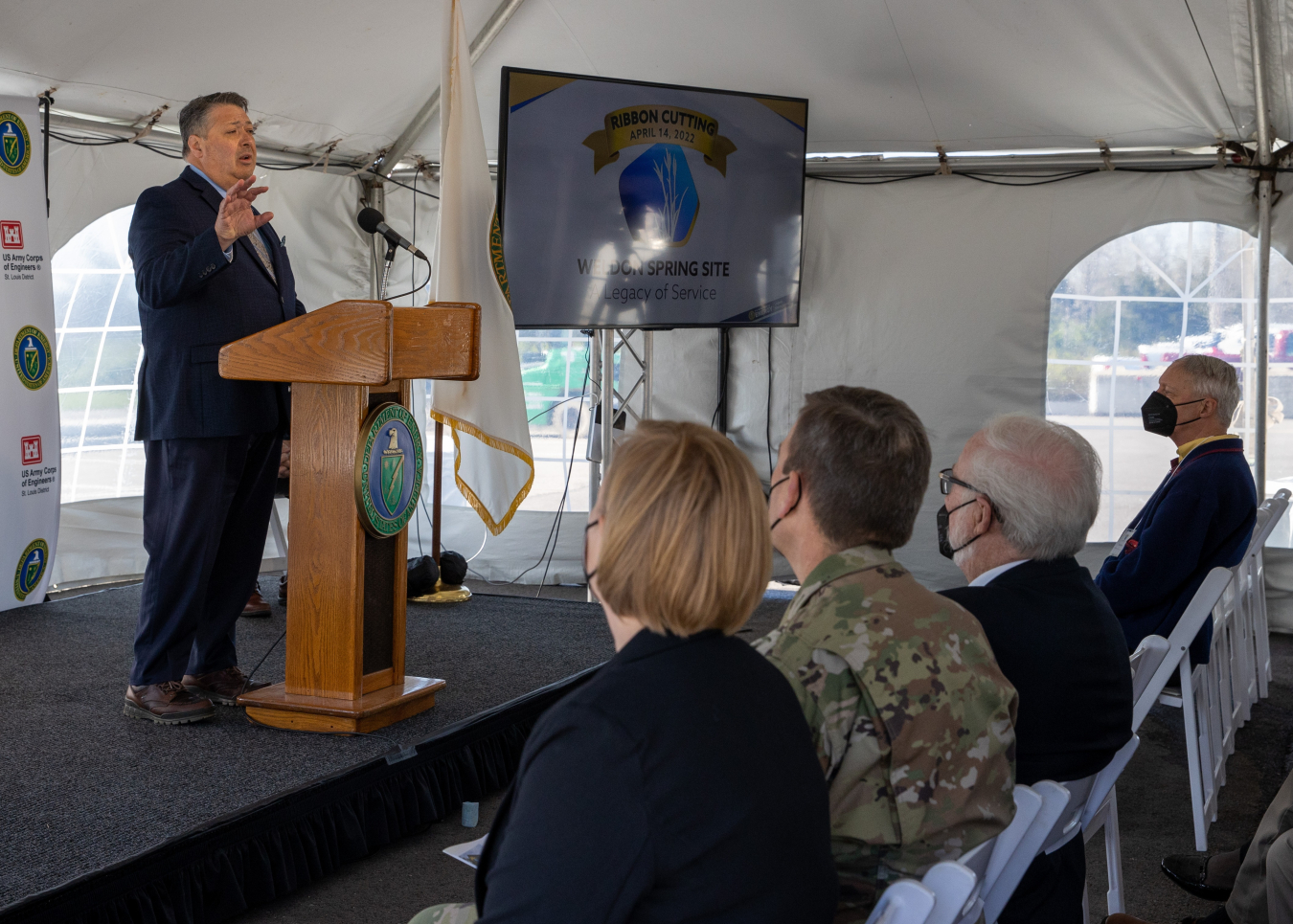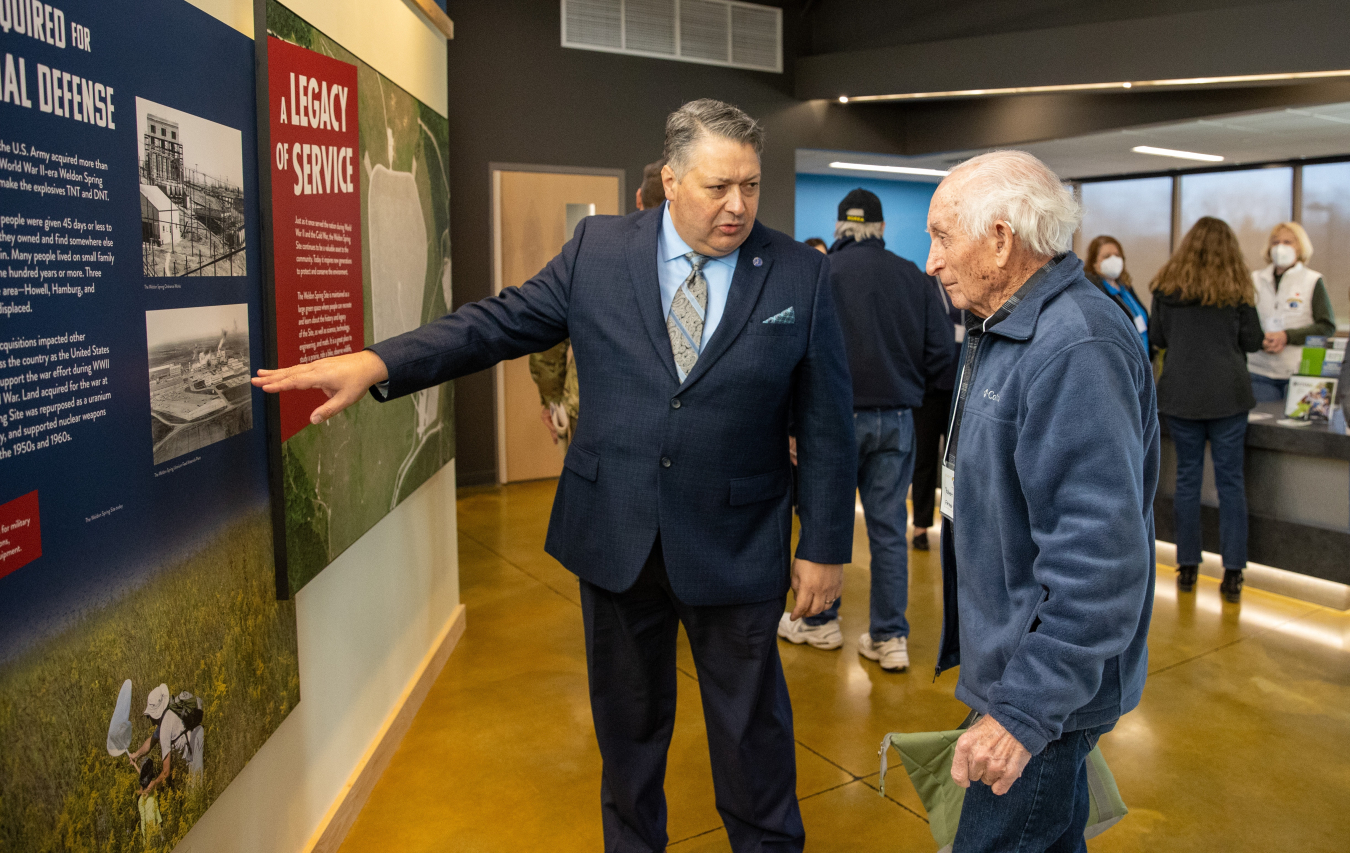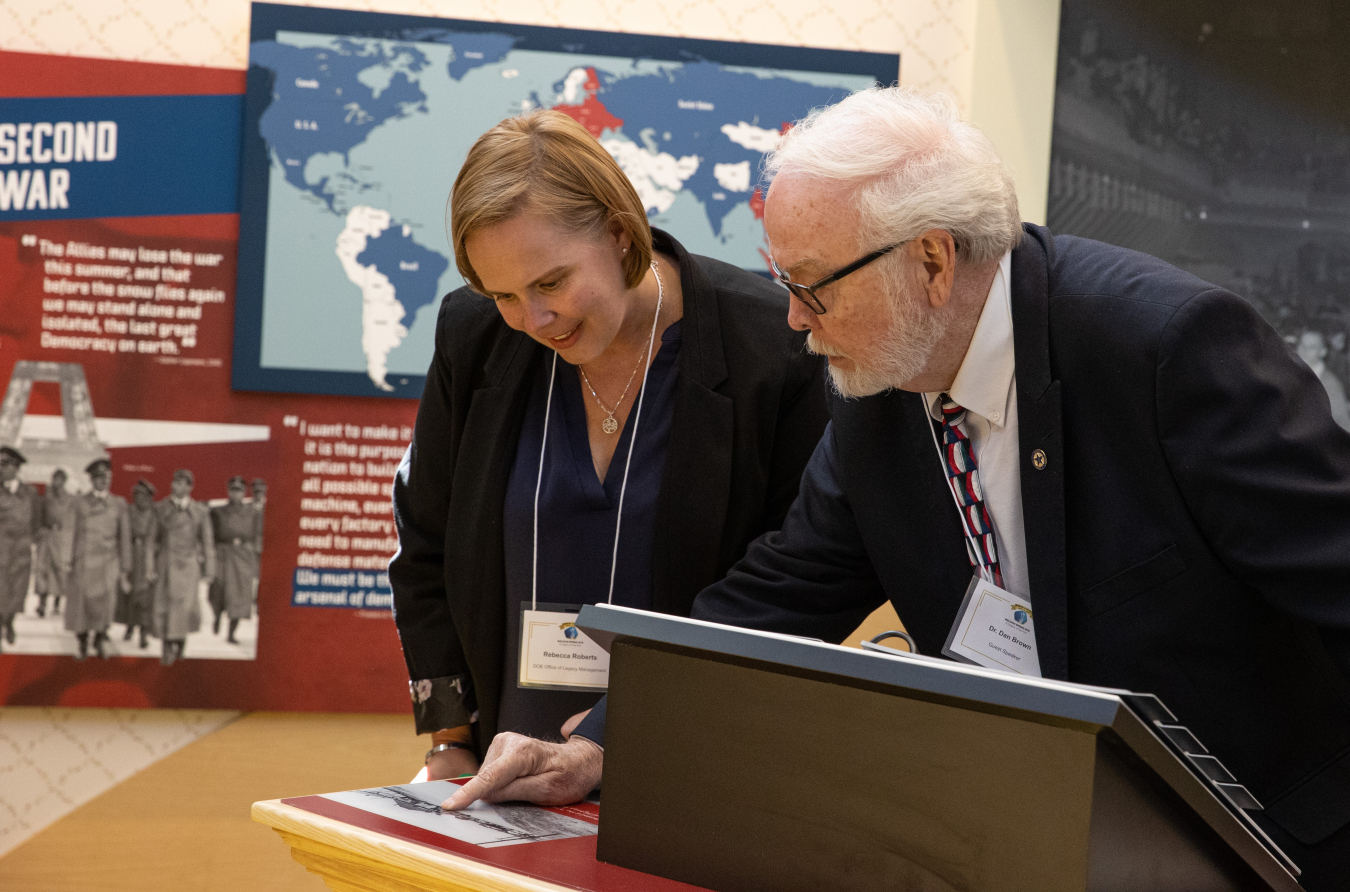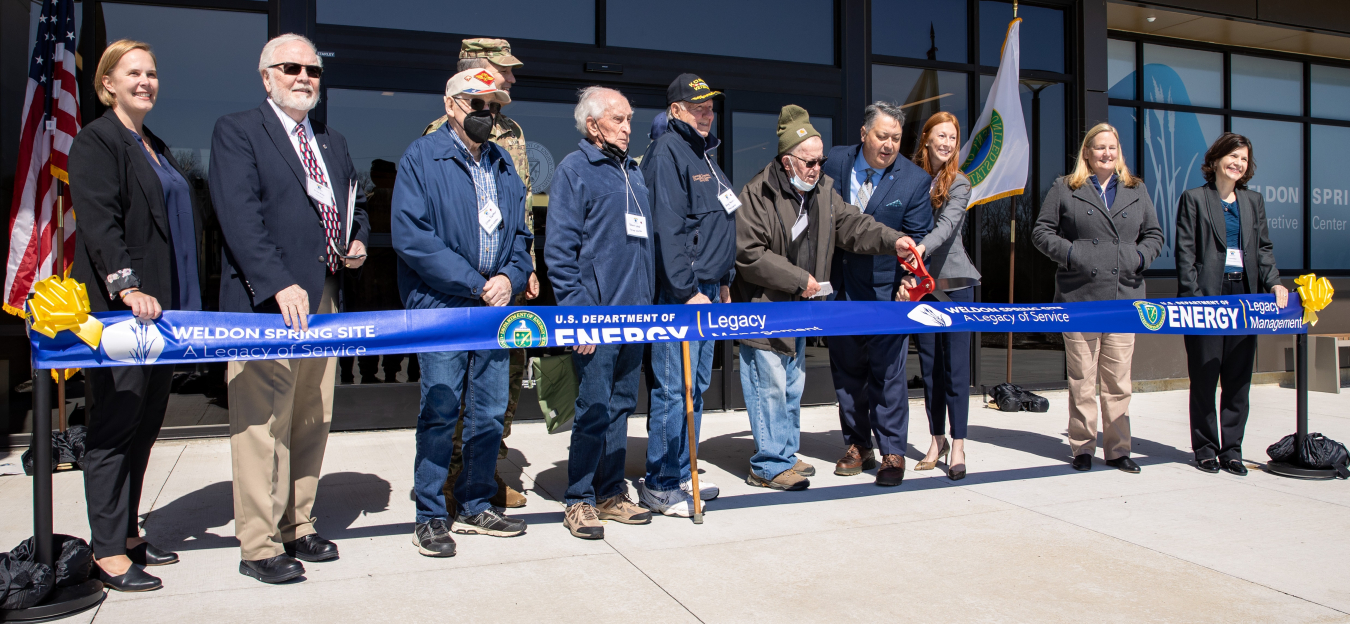U.S. Department of Energy (DOE) Office of Legacy Management (LM) Director Carmelo Melendez paid tribute to workers at the Weldon Spring Site near St. Charles, Missouri, during a ceremony April 14 to celebrate the opening of the site’s new interpretive center.

LM Director Carmelo Melendez addressed about 70 guests during a ribbon cutting ceremony for the Weldon Spring Site Interpretive Center on Thursday, April 14, near St. Charles, Missouri.
The 25,000-square-foot interpretive center opens its doors to the public on April 15. Technical assistance with the design and construction of the $7.4 million facility was provided by a support agreement between LM and the U.S. Army Corps of Engineers (USACE).
The facility was constructed to honor the work performed at the Weldon Spring Site, highlight the workers who provided their service to the nation, and recognize the sacrifices of displaced families and others who were impacted. The interpretive center will also offer the surrounding community a versatile resource for education, research, and community involvement.

LM Director Carmelo Melendez shows former Weldon Spring Site worker Robert Laird one of the exhibits inside the new Weldon Spring Site Interpretive Center near St. Charles, Missouri. LM welcomed about 70 guests to a ribbon cutting ceremony on Thursday, April 14.
“The United States owes a debt of gratitude to the workers at the Weldon Spring Site and workers throughout the nuclear complex who gave so much to our nation,” Melendez said. “Facilities like the Weldon Spring Site Interpretive Center provide valuable resources to the community and allow DOE to recognize the work of so many people who played critical roles in the Allied forces winning World War II and the Cold War.”
Melendez spoke to a crowd of about 70, as did Col. Kevin R. Golinghorst, Commander, USACE St. Louis Engineers District; Dr. Daniel Brown, local historian, educator, and author; and Rebecca Roberts, LM Weldon Spring site manager.
Golinghorst said the collaboration between LM and USACE is an example of how intergovernmental cooperation can serve the public.
“We are incredibly proud of the partnership and our team’s contribution to achieve this public space,” Golinghorst said. “Utilizing state-of-the-art engineering principles will enable the U.S. Department of Energy Office of Legacy Management to provide a sustainable community resource to the many visitors, teachers, and school groups who will visit this facility.”
Recently installed exhibits at the interpretive center highlight the site’s history, cleanup, and continuing long-term stewardship. The Weldon Spring Site is located in St. Charles County near St. Louis and is now managed by LM.
“The DOE Office of Legacy Management takes seriously its responsibilities of post-closure and protecting human health and the environment at DOE sites. The Weldon Spring Site is a success, not only in the work that occurred here during its operations, but the cleanup and beneficial reuse that followed,” Melendez said. “This interpretive center plays an important role by allowing DOE to tell that important story.”

LM Weldon Spring Site Manager Rebecca Roberts talks with local historian Dr. Daniel Brown as part of activities at a ribbon-cutting ceremony at the new Weldon Spring Site Interpretive Center near St. Charles, Missouri, on Thursday, April 14.
Brown indicated it was important to remember the more than 700 people who were displaced when the facility was built in the 1940s.
“They said, ‘We’ll go.’ They didn’t like it, but they said that if the federal government says they need our land for the defense of our country … ‘We’ll go,’” said Brown, who said he looks forward to generations of children coming to the interpretive center to learn about the people in the area who made sacrifices.
From 1941-1945, the U.S. Army manufactured trinitrotoluene (TNT) and dinitrotoluene (DNT) at the Weldon Spring Ordnance Works. In 1956, the U.S. Atomic Energy Commission constructed the Weldon Spring Uranium Feed Materials Plant, now referred to as the Weldon Spring Chemical Plant. The plant converted processed uranium ore concentrates to pure uranium trioxide, intermediate compounds, and uranium metal. A small amount of thorium was also processed.
The state-of-the-art interpretive center is energy efficient and features the exhibit hall, four classrooms, an auditorium, and meeting spaces available for use, at no cost, to community groups such as non-profit organizations and schools. Expanded offerings of on-site STEM education, an emphasis of DOE, will also be offered.
“DOE looks forward to providing valuable resources to the community through the Weldon Spring Site Interpretive Center,” Roberts said. “The interpretive center allows DOE to provide educational programs, tours, research opportunities, and meeting rooms for public use. The surrounding gardens and prairie trails are also open to the public to explore.”

LM Director Carmelo Melendez, fourth from right, joins former workers and distinguished guests for the cutting of the ribbon during a ribbon cutting ceremony at the new Weldon Spring Site Interpretive Center near St. Charles, Missouri, on Thursday, April 14.
For more information on the Weldon Spring Site Interpretive Center visit /lm/weldon-spring-site-interpretive-center and for more information on the Weldon Spring Site visit /lm/weldon-spring-site-missouri.
